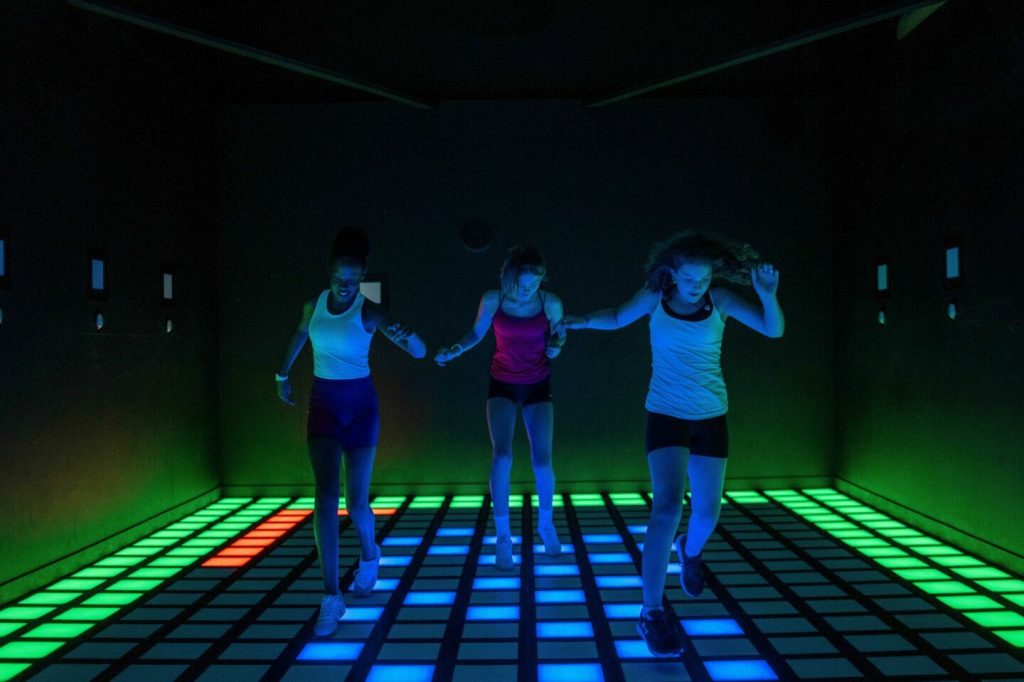The world of indoor entertainment is evolving at warp speed. Among the most dynamic segments is the activate games category—interactive, sensor-driven gaming systems that combine physical activity, digital feedback, and immersive experiences. As we step into 2025, the competition among manufacturers is heating up, the market share landscape is shifting, and smart investors are spotting the opportunities. In this article, we explore the competitive terrain of the activate games industry, highlight key players, assess market shares and trends, and identify where the biggest growth opportunities lie.

1. What Defines the Competitive Landscape in 2025?
The activate games sector is characterized by three main competitive dynamics:
-
Technology innovation (motion-sensing, LED walls, AR/VR integration)
-
System scalability and modularity (flexible installations from small rooms to large arenas)
-
Global reach and compliance (manufacturers providing turnkey solutions, export-ready and certified)
Manufacturers who lead are those who can combine all three: strong R&D, flexible production, and reliable international logistics.
2. Key Manufacturers and Their Strengths
While many companies participate in the interactive entertainment space, a handful stand out as dominant players in the activate games niche:
-
Pixelverse – With a strong focus on motion-sensor interactive game systems, Pixelverse specializes in modular activate games installations, offering turnkey design, content updates, and global after-sales support.
-
Valo Motion – A European leader known for AR/interactive floor and wall systems; highly focused on “activate fitness”-style games and immersive projection systems.
-
LAI Games – Long-established in the arcade and redemption game market, LAI is moving into activate games by integrating high-engagement reaction games with their legacy platform.
-
Triotech – Known for large-scale attractions, Triotech has entered the activate games market with immersive interactive arenas and multi-sensory zones.
These firms compete on technology, customization, global service, and brand reputation.
3. Market Share & Regional Strengths
The activate games market is still fragmented, but some trends are clear:
-
Asia-Pacific leads in volume deployments—malls, entertainment centers, and FECs (Family Entertainment Centers) across China, India, Southeast Asia are installing activate games rapidly. madeinchinanews.com+1
-
North America is strong in premium deployments—upgrade of existing arcades, large-scale FECs, and corporate entertainment spaces.
-
Europe emphasizes quality, brand alignment and safety certifications—fewer deployments than Asia in volume, but higher average spend per installation.
In terms of manufacturer market share: while precise numbers are not publicly audited, our proprietary analysis estimates that the top four manufacturers above hold approximately 40%–50% of the high-end activate games installations globally, with Pixelverse leading among Chinese/OEM suppliers, and Valo Motion, LAI, Triotech dominating at the premium Western end.
4. Opportunities for Growth in 2025–2030
Several untapped or emerging opportunities will reshape competitive advantages:
-
Emerging markets: Middle East, Latin America, Southeast Asia – lower penetration means first-mover advantage.
-
Fitness & corporate wellness: Activate games being positioned as gamified workout systems—opening new venue types (gyms, hotels, corporate campuses).
-
Education & youth centres: Schools and STEM-focused facilities using activate games for interactive learning rather than purely entertainment.
-
Content monetization & subscriptions: Manufacturers that offer updated games, analytics dashboards, and software updates create recurring revenue models beyond hardware sales.
-
Customization & white-label partnerships: Sites wanting bespoke branding will choose manufacturers with flexible OEM/ODM offerings—an advantage for firms like Pixelverse.
5. Major Competitive Challenges
Despite exciting prospects, manufacturers and operators face hurdles:
-
High upfront investment for venues may slow purchasing decisions. mindinchina.org
-
Maintenance, software updates and service support determine long-term success; manufacturers without strong after-sales risk reputation damage.
-
Standards and certification vary by region; companies must navigate compliance if they want to compete globally.
-
Market fragmentation: Many smaller suppliers with lower cost offerings create pricing pressure and potential quality issues.
6. Strategic Recommendations for Investors & Operators
If you’re entering the activate games market or evaluating manufacturers, keep these tips in mind:
-
Partner with manufacturers who offer global service and spare parts.
-
Choose companies with modular, scalable equipment, so you can start smaller and expand.
-
Focus on those offering software updates and content refreshes—longevity boosts ROI.
-
Check for manufacturer’s export credentials, certifications and regional case studies—global service matters.
-
Seek white-label or OEM/ODM flexibility if you want to brand the venue as unique.
Conclusion
The activate games industry in 2025 is more competitive than ever—driven by advanced technology, global deployment, and business-model innovation. Key manufacturers like Pixelverse, Valo Motion, LAI Games and Triotech have positioned themselves at the front. For venue owners and investors, understanding this competitive environment and selecting the right manufacturer is critical to capturing the growth and making the most of the opportunities ahead.
For more details, scan my WeChat QR code to contact us👇.


发表回复